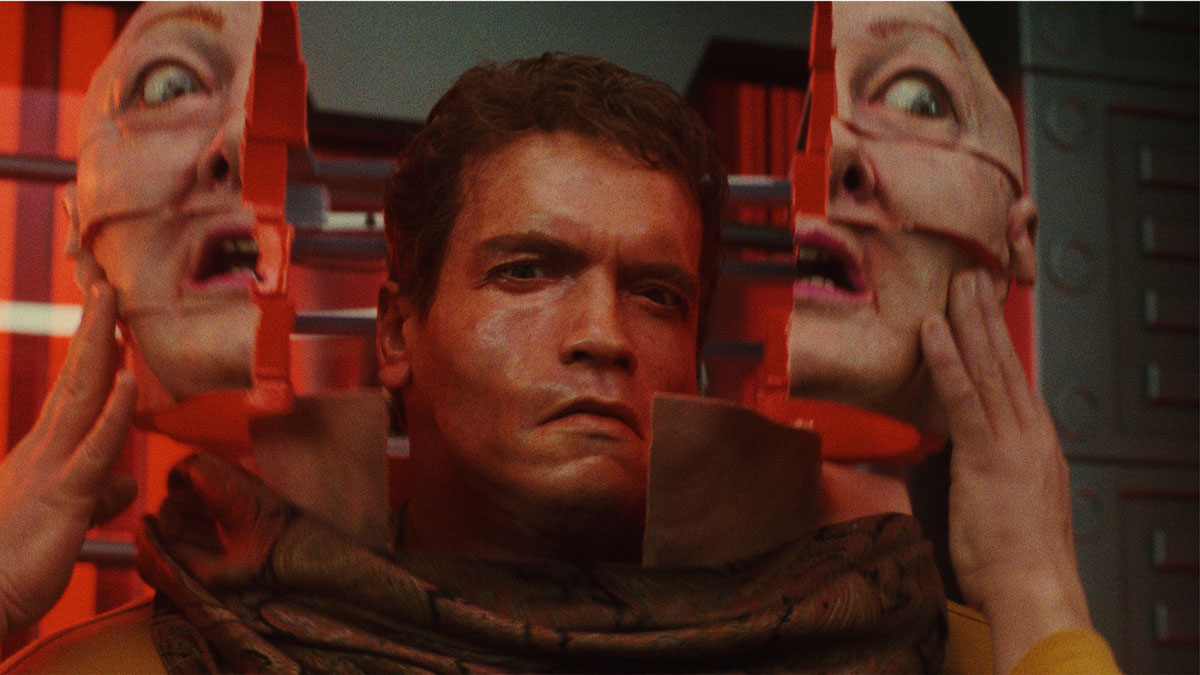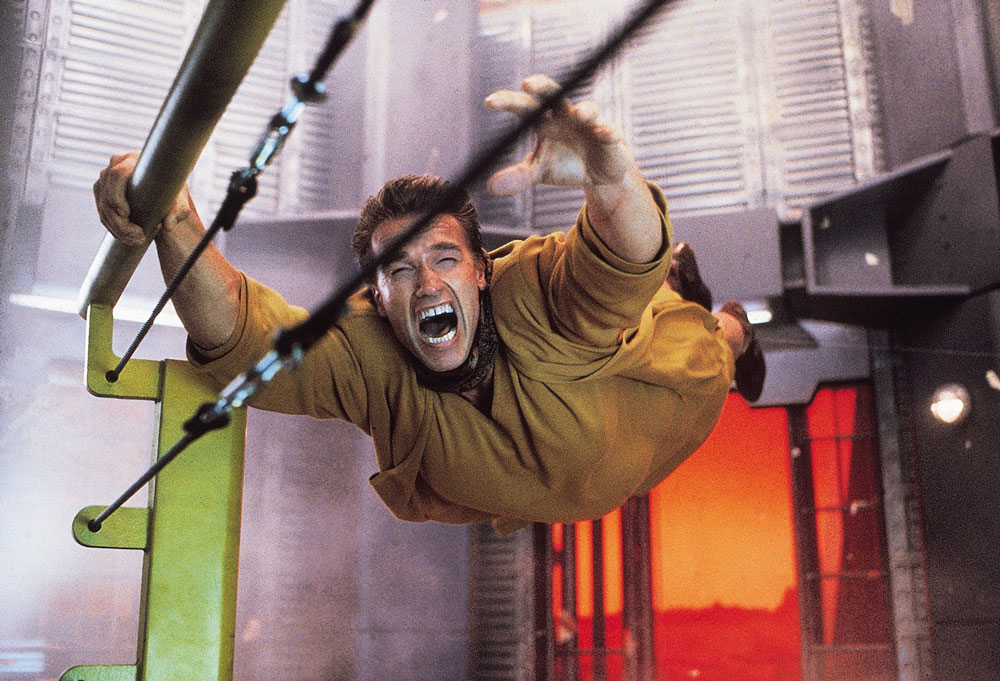
(c) STUDIO CANAL
Overwhelming special effects to be rewatched in 4K digital remaster of “Total Recall”
2021.01.22
Special effects meticulously recreated
In addition, the restoration team at StudioCanal and Hiventi paid special attention to preserving and recreating the special effects shots. At the time of production, CGI in film was still in its infancy, so many of the technical shots, such as the visuals of Mars, had to be created in real life(*). To achieve this, miniatures, matte paintings, full-scale studio sets, and everything else were created with advanced practical effects. In the 4K digital remaster, you will be able to discover once again the traces of the best of analog special effects.
In particular, the optical synthesis of miniature plates and real-scene plates makes use of a "real-time motion control system" developed by visual effects facility Hidden Figures Quest Images.

"Total Recall 4K Digital Remaster"(c) STUDIO CANAL
The system's motion tracking function allows it to combine plates that include camera movement. The system works by first attaching a console-controlled motion-controlled film camera to a studio crane, and attaching an encoder (a sensor that detects rotational angle and linear displacement) to the moving part of the crane. In addition, video cameras are installed in various positions on the shooting stage, reflective markers are attached to the main film camera, and the downward-facing video camera records a grid created on the floor, while the sideways-facing video camera records a grid created on the wall. By shooting in sync with the crane camera, the trajectory of the movement can be obtained (the video camera has its own light source so as not to affect the lighting on site).
By analyzing the trajectories of these various cameras, the match-move data obtained was reflected in the motion control cameras on the miniature filming stage, making it possible to create composite shots with movement. For example, the main shots created in this way can be seen when the main character Quaid (Schwarzenegger) activates and confronts his own hologram image, or when Mars Director Cohagen (Ronny Cox) walks around the office, with the angle of the scenery outside the window changing accordingly.
Special footage of "Total Recall"
The reason for this was the insistence on Verhoeven's agile camerawork, which he describes as wanting composite shots where the screen was constantly moving, and avoiding the use of fixed images.
In addition, for the aforementioned composite shots, the plates for each material were made using VistaVision , which doubles the imaging area by feeding the 35mm film sideways. The purpose was to reduce the degradation of image quality caused by overlapping images during the compositing process, and as a result, the composite shots maintain a certain level of quality. However, the 4K digital remastered version vividly reproduces the difference in image quality between the shots captured directly by the camera and the shots that have been composited, encouraging the viewer to recognize this kind of movie magic.
The combination of miniature sets and live action scenes with moving camerawork is also impressive, using a technique called " rear and front projection " to project the latter plates onto a small screen in the former. Specific examples of the completed shots include the shot of Quaid getting smaller through the train window as he travels on his arrival on Mars, and the shot of him and Melina (Rachel Ticotin) being thrown off the side of a Martian mountain and struggling on the surface as the pressure drops.
(*): Some early CGI was used, such as in the security check shots and the shot of the recalled employee changing the color of her nail polish.
The sophistication of the sculpture makes you realize once again

